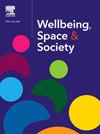对学校操场绿化项目的影响和可转移性的现实评估:APPIE绿色研究协议
IF 2.2
Q2 GEOGRAPHY
引用次数: 0
摘要
背景:通过绿化学校场地,促进生活在城市地区的儿童接触大自然是一项很有希望的“将健康纳入所有政策”措施,特别是因为它将使儿童受益于“自然”游戏的优势,即基于与自然因素相互作用的非结构化游戏。但这取决于一定的条件。APPIE GREEN研究的目的是分析学校操场绿化的条件,作为实验的一部分,在法国波尔多市开展的商业课程项目鼓励自然玩耍。方法采用观察性多案例研究,遵循现实主义评价范式。在一个循环的过程中,我们将研究波尔多市的7所学校,它们构成了7个案例研究。收集的数据本质上是定性的,基于对空间及其用途的观察、对学校工作人员的半结构化访谈和对儿童的公开访谈。数据收集的目的是描述每个案例的背景元素(Ce和Ci)、机制(M)和结果(O),并迭代验证CeCiMO配置,被认为是绿化鼓励自然玩耍的功能。本研究的结果旨在为该计划鼓励自然玩耍的方式提出解释性配置。目的是理论化这是如何起作用的,以便定义可转移性的条件:它如何起作用,在什么条件下起作用,对谁起作用?更实际的是,这将使1)向项目负责人提供详细的建议2)传播将在学校场地以及城市其他地方实施的关键要素3)提出倡导儿童环境绿化的建议成为可能。本文章由计算机程序翻译,如有差异,请以英文原文为准。
Realist evaluation of the impact and transferability of a greening of school playgrounds program: The APPIE GREEN study protocol
Background
Promoting access to nature for children living in urban areas through the greening of school grounds is a promising "health in all policies" measure, particularly because it would enable children to benefit from the advantages of "natural" play, i.e. unstructured play based on interaction with natural elements. But this is dependent on certain conditions. The aim of the APPIE GREEN study is to analyse the conditions under which the greening of school playgrounds as part of an experiment, the Cours Buissonnières programme run in the city of Bordeaux in France, encourages natural play.
Methods
The design is an observational multiple case study which follows the realist evaluation paradigm. In a cyclical process, we will study 7 schools in the city of Bordeaux, which constitute the 7 case studies. The data collected will be qualitative in nature, based on observations of spaces and their uses, semi-structured interviews with school staff and open interviews with children. The aim of the data collection is to characterise the contextual elements (Ce and Ci), the mechanisms (M), and the results (O) of each case and to iteratively validate the CeCiMO configurations, considered as the functions through which greening encourages natural play.
Discussion
The results of this study aim to propose explanatory configurations for the way in which the programme encourages the exercise of natural play. The aim is to theorise how this works in order to define the conditions for transferability: how, under what conditions and for whom does it work? More pragmatically, this will make it possible i) to provide project leaders with detailed recommendations ii) to disseminate the key elements to be implemented in school grounds but also elsewhere in the city iii) to propose advocacy for the greening of children's environments.
求助全文
通过发布文献求助,成功后即可免费获取论文全文。
去求助
来源期刊

Wellbeing Space and Society
Social Sciences-Social Sciences (miscellaneous)
CiteScore
2.70
自引率
0.00%
发文量
46
审稿时长
124 days
 求助内容:
求助内容: 应助结果提醒方式:
应助结果提醒方式:


